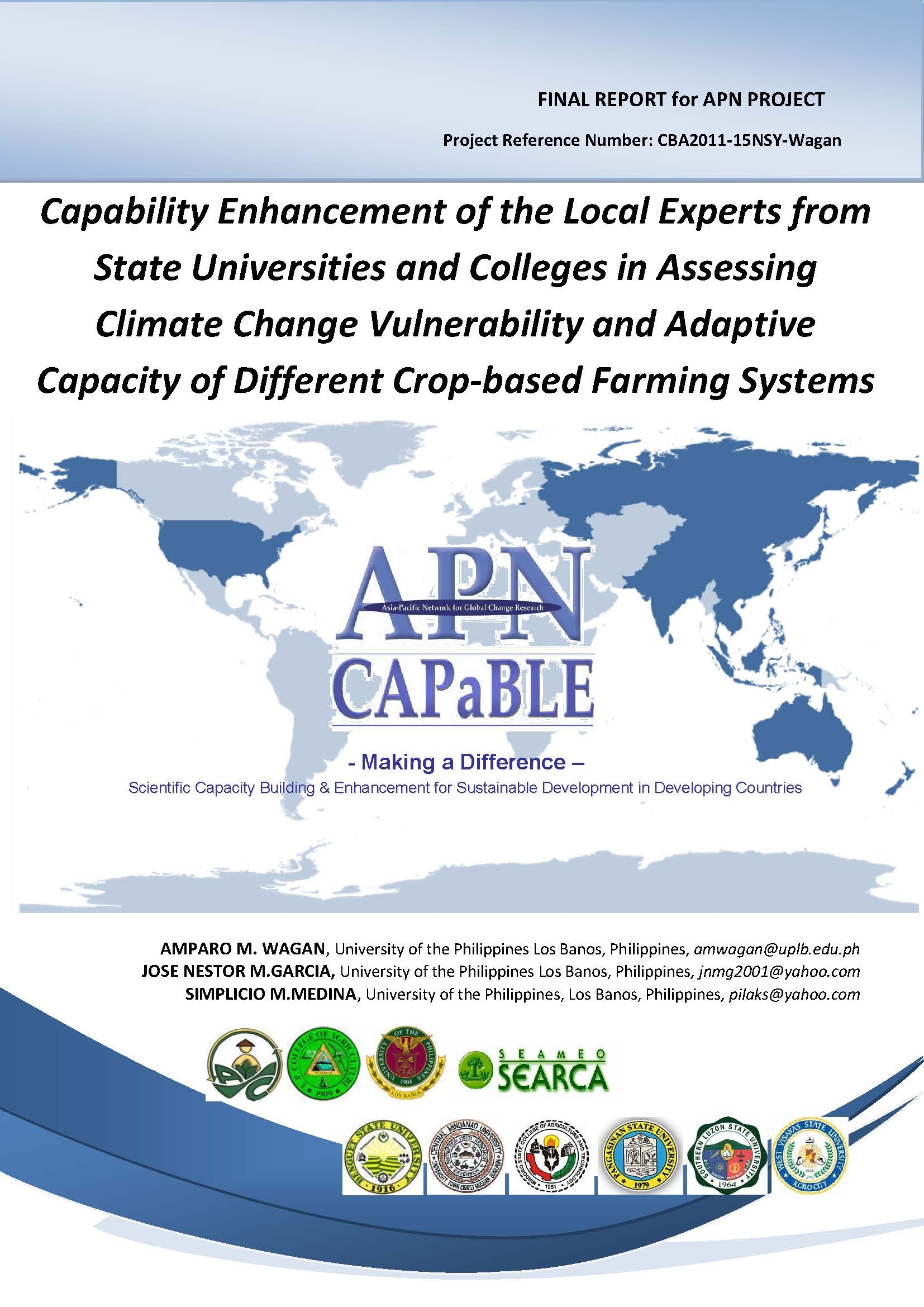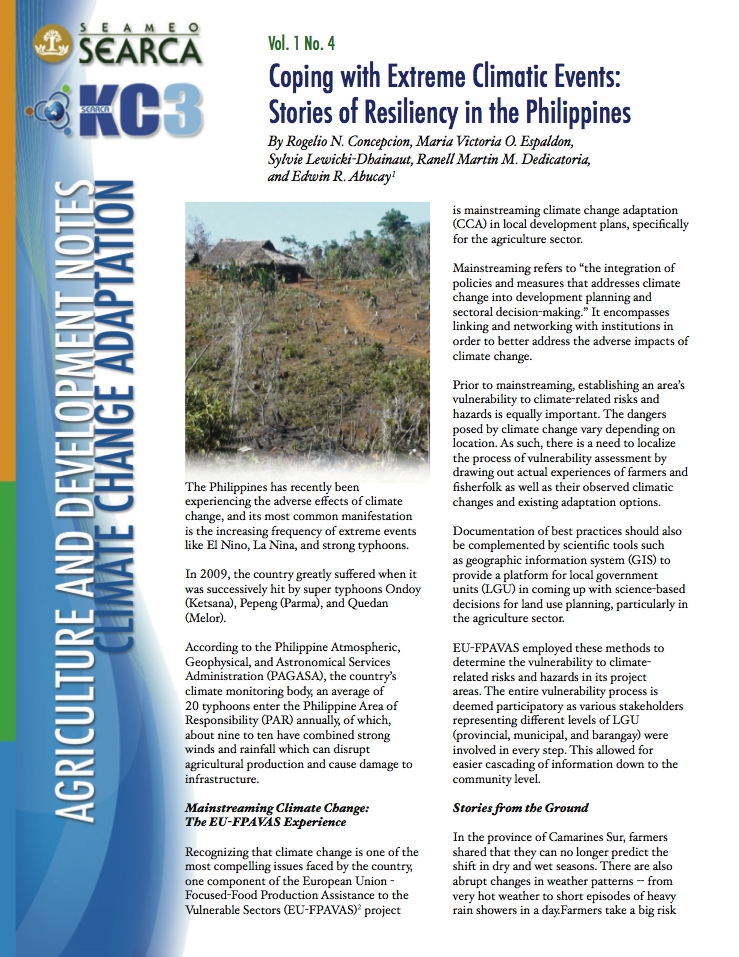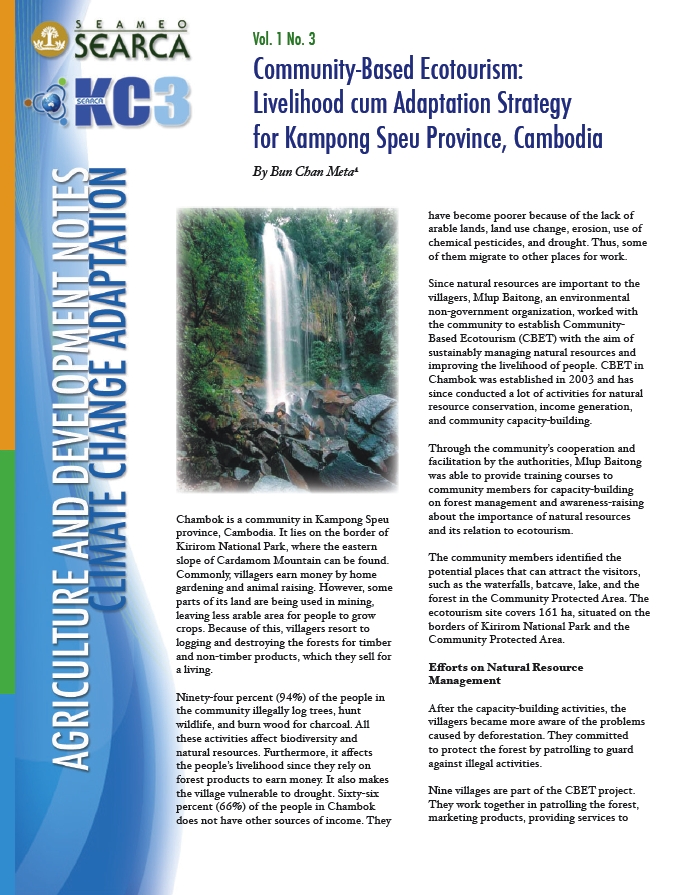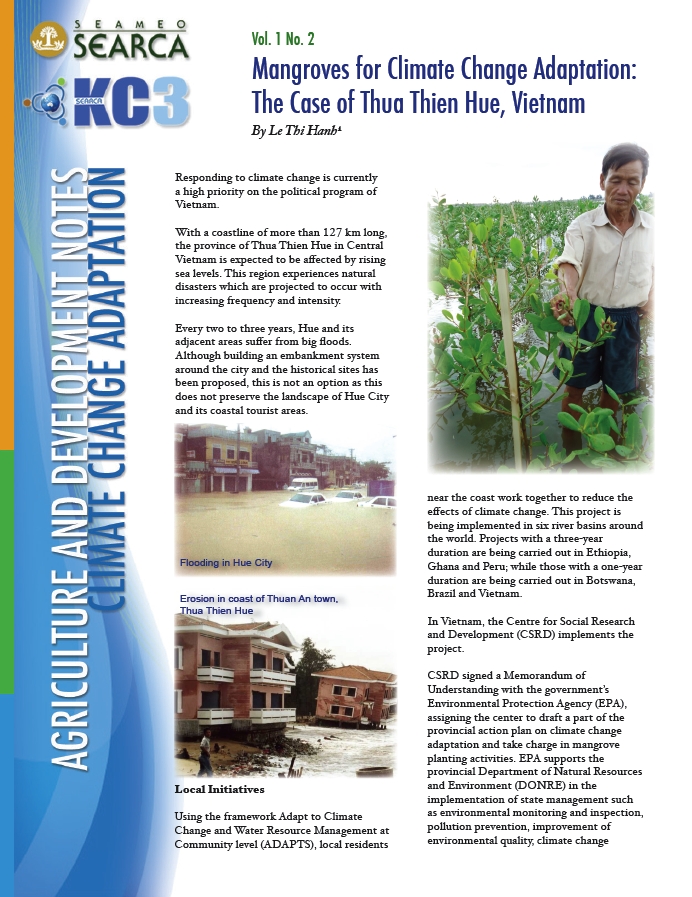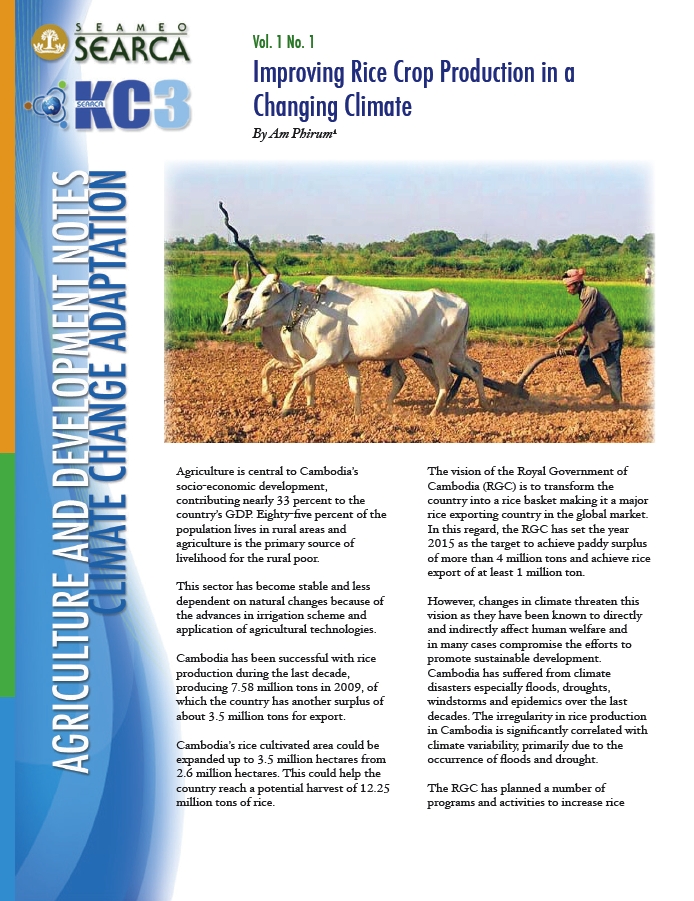SEARCA Publications
One of the oldest towns in Quezon, Philippines is Infanta—a first class municipality3 serving as home to a population of more than 60,000. Infanta is located on the eastern coast of the northern island of the Philippines. It directly faces the Pacific Ocean and the Sierra Madre mountain range, which makes it a site vulnerable to hydro-meteorological disasters and sea level rise. For their livelihood, residents of Infanta rely on its agricultural, fisheries, trade, and services sector. On 29 November…
This is a capability enhancement project where agriculture experts from various state universities and colleges (SCUs) in the Philippines were provided with knowledge on climate change and effects on Philippine agricultural systems and were equipped with skills on community-level vulnerability assessment which are requisites for a more relevant role in planning /implementing site-specific adaptation measures for agriculture and the farming communities facing climate change adversities. The project enabled participating SCUs to identify site-specific adaptation measures for agriculture and disseminate information…
The Philippines has recently been experiencing the adverse effects of climate change, and its most common manifestation is the increasing frequency of extreme events like El Nino, La Nina, and strong typhoons. In 2009, the country greatly suffered when it was successively hit by super typhoons Ondoy (Ketsana), Pepeng (Parma), and Quedan (Melor). According to the Philippine Atmospheric, Geophysical, and Astronomical Services Administration (PAGASA), the country’s climate monitoring body, an average of 20 typhoons enter the Philippine Area of Responsibility…
Chambok is a community in Kampong Speu province, Cambodia. It lies on the border of Kirirom National Park, where the eastern slope of Cardamom Mountain can be found. Commonly, villagers earn money by home gardening and animal raising. However, some parts of its land are being used in mining, leaving less arable area for people to grow crops. Because of this, villagers resort to logging and destroying the forests for timber and non-timber products, which they sell for a living.…
Responding to climate change is currently a high priority on the political program of Vietnam. With a coastline of more than 127 km long, the province of Thua Thien Hue in Central Vietnam is expected to be affected by rising sea levels. This region experiences natural disasters which are projected to occur with increasing frequency and intensity. Every two to three years, Hue and its adjacent areas suffer from big floods. Although building an embankment system around the city and the historical…
Agriculture is central to Cambodia’s socio-economic development, contributing nearly 33 percent to the country’s GDP. Eighty-five percent of the population lives in rural areas and agriculture is the primary source of livelihood for the rural poor. This sector has become stable and less dependent on natural changes because of the advances in irrigation scheme and application of agricultural technologies. Cambodia has been successful with rice production during the last decade, producing 7.58 million tons in 2009, of which the country has another surplus of about 3.5 million tons…


